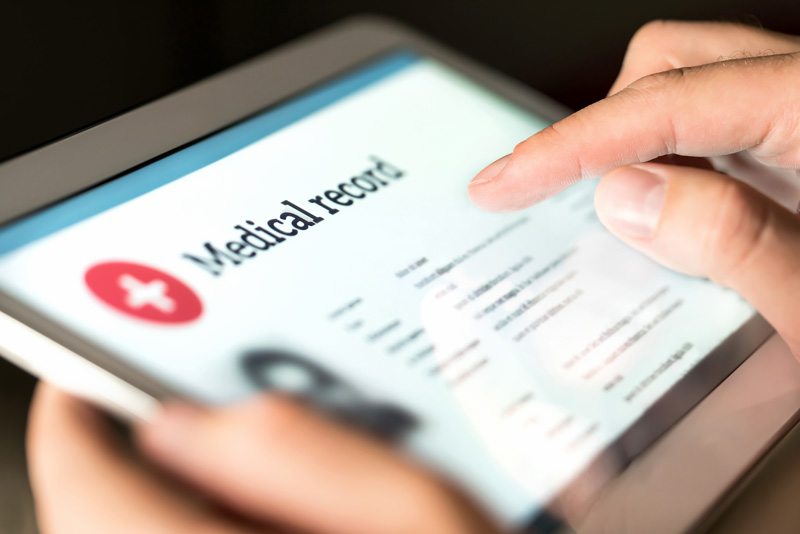It’s no surprise that behavioral health providers are exploring how technology and artificial intelligence (AI) can improve patient care and support clinicians. Issues like burnout, the nationwide shortage of clinicians, and administrative burdens can be (at least) partially addressed by new technology that streamlines documentation or remotely connects clinicians with patients.

While these improvements are a step forward, they do not address a foundational issue in behavioral health care: treating patients with truly personalized care plans. It’s time that we move beyond relying on technology as just an administrative assistant and figure out how to incorporate it to deliver customized patient care.
Impactful Recent Advancements
There are two main areas where we believe technology and AI have already moved behavioral health care toward a more personalized model. First, AI note-takers and transcription services (Rajkumar, 2024) are helping clinicians speed record keeping and recognize patterns in patient feedback. These tools reduce the administrative burden on clinicians, who can now devote more time to treating their patient panels.
Secondly, the ubiquity of mobile phones and video platforms allows clinicians to schedule therapy and psychiatry sessions remotely, vastly increasing access to care. People living in healthcare deserts and those who are part of vulnerable populations now have care options even if they reside in an area without a behavioral health practitioner. While telehealth visits for physical health care decrease, demand for virtual mental health care continues to grow (Derman, 2024) thanks to the accessibility of video platforms.
Where We’re Still Falling Short
While technology and AI have increased access and uncovered efficiencies in documentation and compliance, these improvements only partially meet the growing need for personalized treatment. That’s because patient data are still siloed across providers and settings, making coordination of treatment across the care continuum nearly impossible. Some conditions cause a misdiagnosis rate of roughly 50% (Seibert, 2024).
Healthcare in general, and behavioral healthcare specifically, has been critically hampered by a lack of communication between physical and mental health clinicians, healthcare systems, and patient Electronic Health Records (EHRs). Considering the strong link between physical and mental health (Fiorillo et al., 2024), this fragmentation leads to huge gaps in care and causes preventable harm in many cases. Technology can plug this gap by facilitating the sharing of patient data.
For example, a primary care provider (PCP) may prescribe antidepressants to a new patient suffering from bipolar disorder based on limited behavioral health data, which can trigger manic episodes. If the patient’s physical health and psychiatric history were shared across providers, then that PCP might better understand how to personalize treatment because other therapies are better suited to address that patient’s specific needs rather than antidepressants.
Additionally, patients may be admitted into hospitals where they are put on medications that inadvertently worsen their condition, lengthening their stay or increasing the likelihood of readmission in the future. Because that patient’s medical history is compartmentalized across different providers and care settings, they receive “one size fits all” care instead of targeted support.
Using Technology to Improve Treatment
Establishing continuity of care is key to personalizing treatment. It’s been shown to reduce (Maarsingh, 2024) mortality rates, hospital admissions, emergency department (ED) visits, and healthcare costs while improving physician productivity, medication adherence, appropriate prescribing, quality of life, patient-clinician relationships, patient satisfaction, and physician satisfaction.
It seems so simple to imagine that all of a given patient’s medical history should be easily accessible to every clinician in order to make the right treatment decision. Unfortunately, the reality is that patient medical information is scattered across platforms and care settings, resulting in 97% of all hospital data going unused (Moore et al., 2024) every year. New providers who are unfamiliar with a patient need to know if they have a history of issues like suicide attempts, schizophrenia, homelessness, adverse reactions to certain medications, or other comorbidities to develop a safe and effective care plan.
To create continuity of care across all stakeholders, providers, and technology companies must partner to make this possible. This kind of “under the hood” automation and technology promises to have a massive impact on accurately diagnosing and treating patients on an individual level. We’ve seen the first steps in the right direction with Electronic Medical Record (EMR) vendors attempting to build large-scale data-sharing networks, but these are still disparate solutions that do not easily share information between vendors. Thankfully, the federal government has created national data-sharing standards through the Trusted Exchange Network and Common Agreement (TEFCA), with the goal of streamlining information transmission across vendors, hospital systems, and clinicians. However, progress is still in the early stages.
Telehealthcare across different settings and specialties – including EDs, psychiatric hospitals, correctional facilities, home environments, and urgent care clinics – must be connected so that clinicians can see long-term records for a patient they may not have treated before. These longitudinal insights help customize care in the short term while following patients through the healthcare system, helping them move from high-acuity to low-acuity settings more efficiently as their condition improves over time. Leveraging technology to better share pertinent data enables the right care at the right time and in the right dose.
What’s Next for Technology and AI in Healthcare
We predict that as more patient data becomes available through improved sharing of medical information across clinicians and care settings, new efficiencies will be unlocked inpatient treatments and behavioral health operations. This will dramatically optimize care by considering multiple factors, including symptoms, health history, and social determinants of health, when treating a patient. Clinicians will discover new connections between physical and mental health, further advancing care modalities and insights. This allows clinicians to provide truly personalized care by meeting the patient where they are instead of making an educated guess based on how a patient is presenting at a particular time.
Human problem-solving will always be needed when personalizing behavioral care plans. Technology and AI support smart decision-making by presenting all relevant data across time and location. This ensures patients get the best care possible and clinicians are better supported in their roles while reducing risk factors.
Patrick Williamson is Chief Information Officer at Array Behavioral Care. Array Behavioral Care is the nation’s leading virtual psychiatry and therapy practice. To learn more about accessible, comprehensive behavioral health care, visit www.arraybc.com or reach out to care@arraybc.com.
References
Rajkumar, R. (2024, July 2). AI is relieving therapists from burnout. Here’s how it’s changing mental health. ZDNET. www.zdnet.com/article/ai-is-relieving-therapists-from-burnout-heres-how-its-changing-mental-health/
Derman, C. (2024, January 26). While Telemedicine Decreased After COVID-19 Peak, Mental Health Video Visits Rose. Drug Topics. www.drugtopics.com/view/while-telemedicine-decreased-after-covid-19-peak-mental-health-video-visits-rose
Seibert, G. (2024, February 23). Why unsilenced data is critical to personalizing healthcare. The World Economic Forum. www.weforum.org/agenda/2024/02/personalized-healthcare-data/
Fiorillo, A., de Girolamo, G., Filipcic Simunovic, I., Gureje, O., Isaac, M., Lloyd, C., Mari, J., Patel, V., Reif, A., Starostina, E., Summergrad, P., & Sartorius, N.. (2023, January 14). The relationship between physical and mental health: an update from the WPA Working Group on Managing Comorbidity of Mental and Physical Health. NCBI. www.ncbi.nlm.nih.gov/pmc/articles/PMC9840511/
Maarsingh, O. (2024, May 22). The Wall of Evidence for Continuity of Care: How Many More Bricks Do We Need? Annals of Family Medicine. www.annfammed.org/content/22/3/184
Moore, J. & Dias Guichot, Y. (2024, January 5). How to harness the power of health data to improve patient outcomes. The World Economic Forum. www.weforum.org/agenda/2024/01/how-to-harness-health-data-to-improve-patient-outcomes-wef24/




